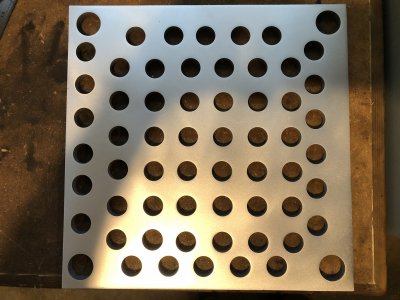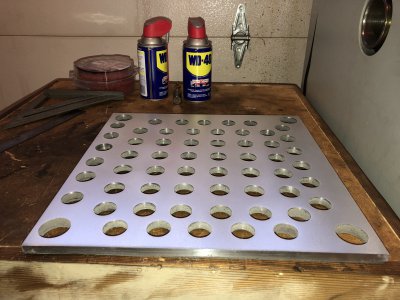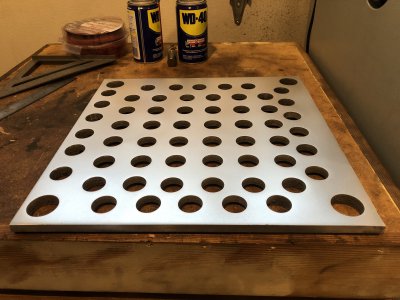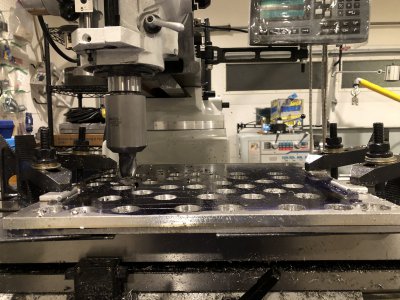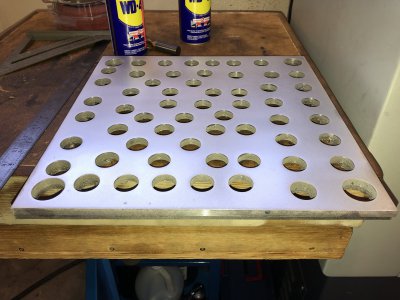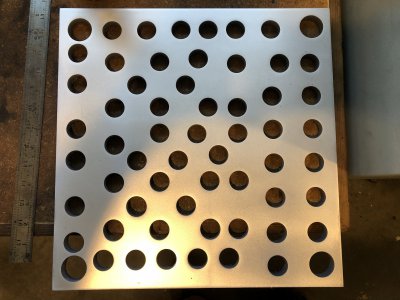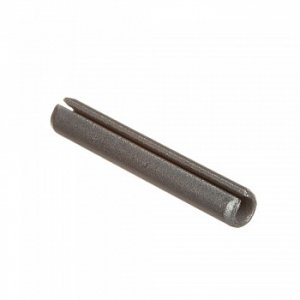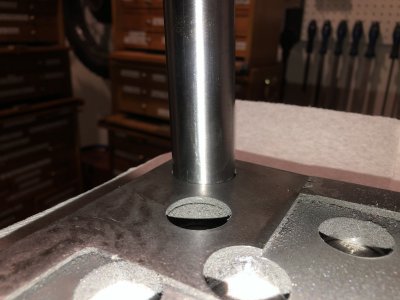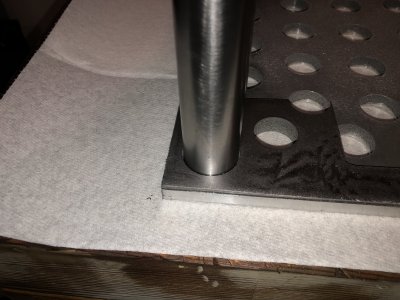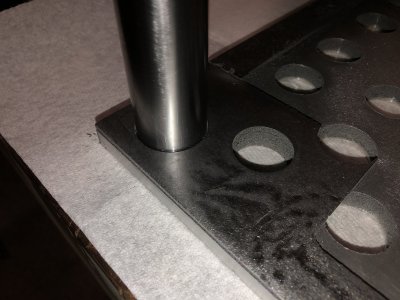I had an extremely rough time face milling the steel frame on the back. My 22 year old son was complaining about the noise & looking up the city ordinance, & then he ordered a decibel meter.
At one point, I was so focused on the workpiece that *I walked away from the milling machine (workpiece in hand, walking out to the side yard) while the x-axis power feed was still on*! Fortunately, I had to come back inside to get my brush. I was absolutely horrified to see the extended quill traveling toward the 8” vise. Who walks away from a milling machine while the power feed is still on?!
I caught a very lucky break, and I was able to turn it off about 4” in x-axis travel before a terrible collision. Lesson learned!
Another problem was that I had *failed to achieve full penetration on two seam welds*. Rather than do a welding repair, I decided to remove four .125” rectangles, and then I just milled the whole thing down a total of .125”. Now what I planned to be a .250” thick frame is only .125” thick. That will teach me to make sure to achieve full pen on my welds!
Here is the cruddy result of the nightmare face milling on the steel frame. I am so glad that this will be hidden. I almost forgot to mention that I had the RPMs set to 1300 because I have been face milling aluminum prior to the steel. I kept checking the inserts because I wondered why it was performing so poorly. You would think that I would be able to tell the difference between 1300 and 600 RPM.
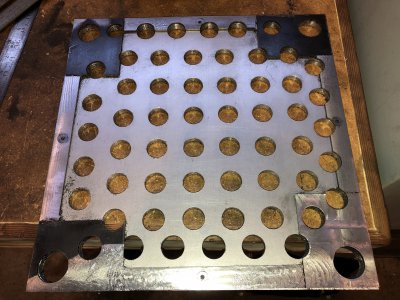
The top of the aluminum shelf definitely did not require face milling. All I had to do was use the orbital sander with 80 to 120 to 220 to 400 grit. It turned out beautiful.
